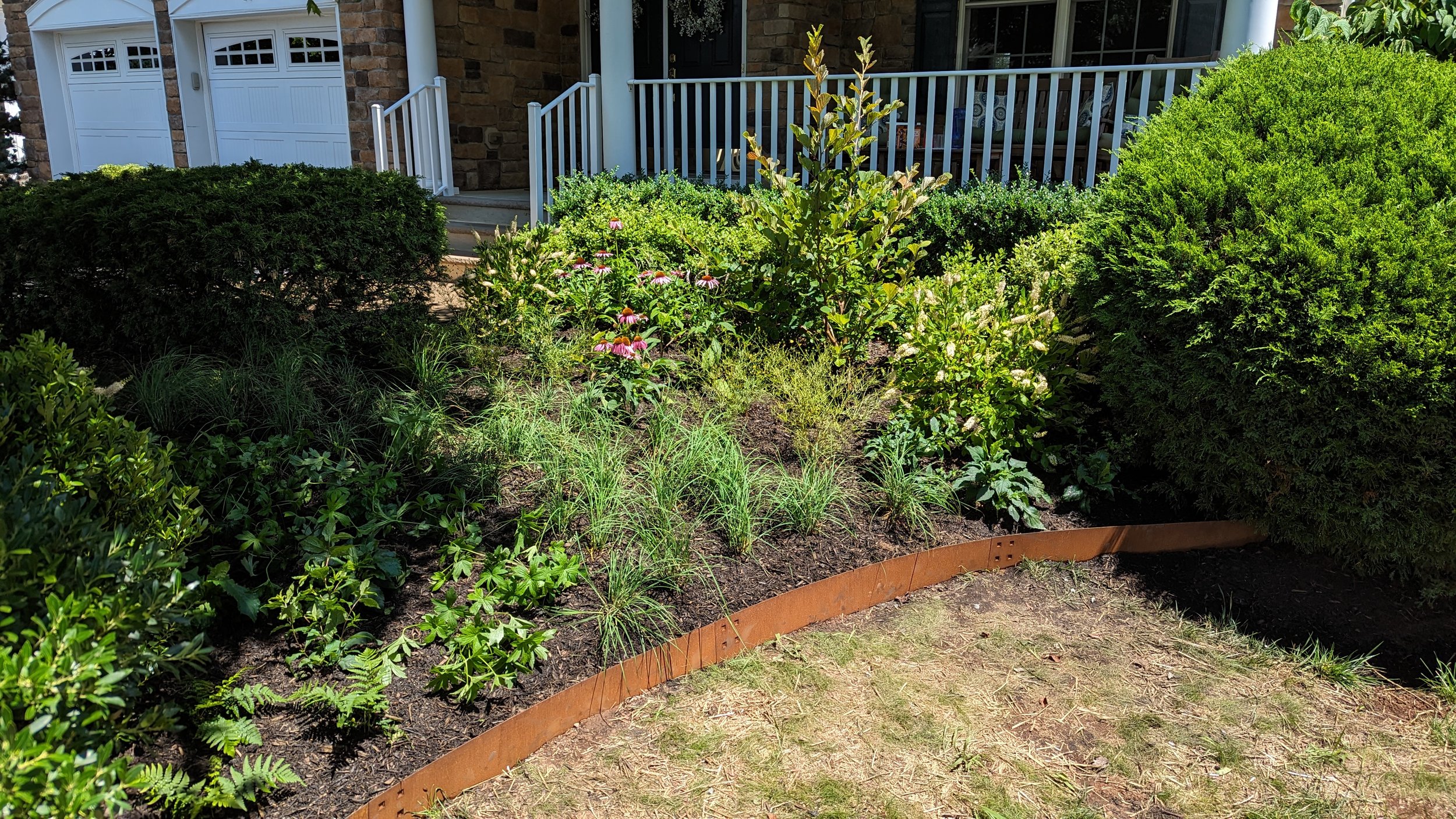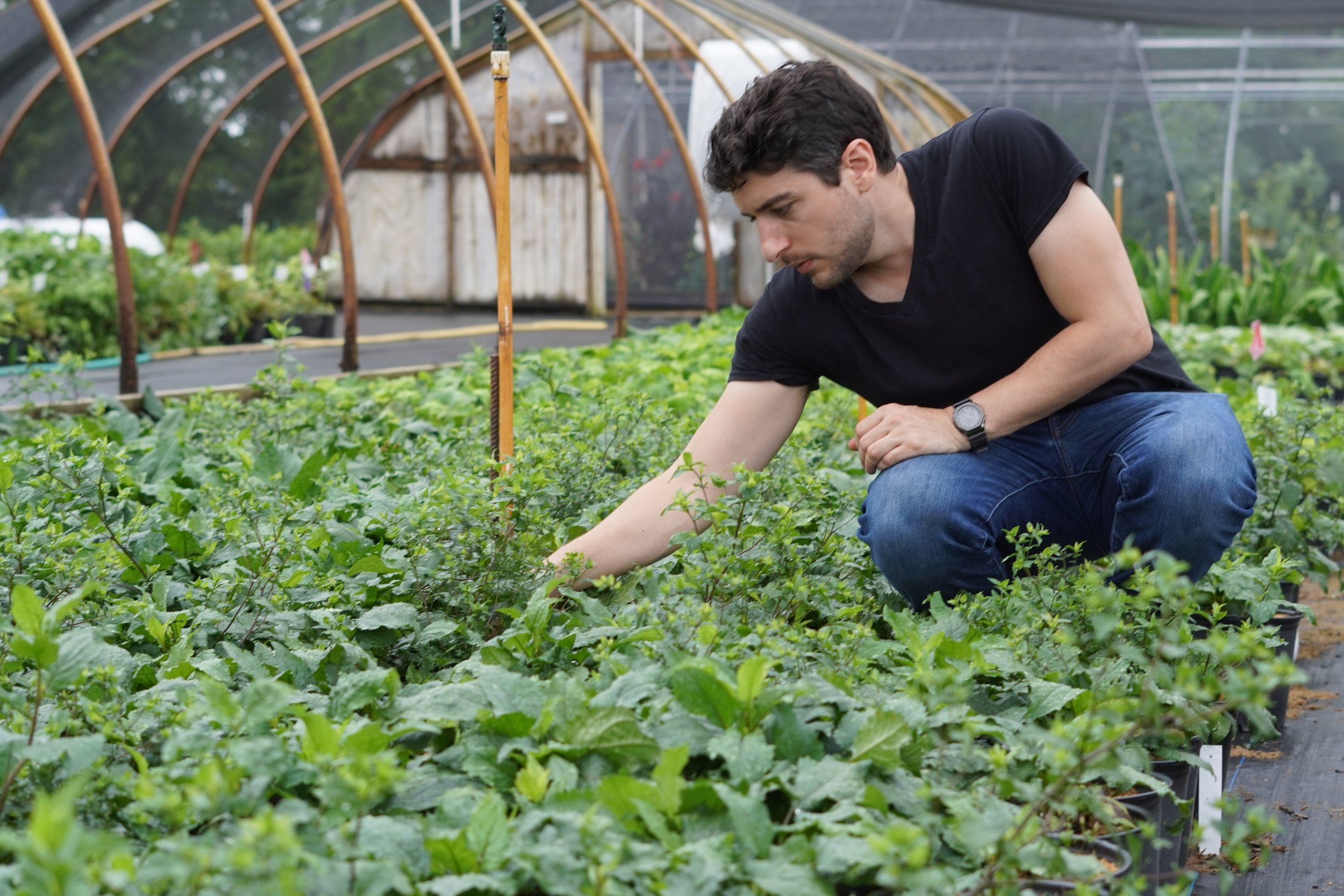
Creating a Native Ecosystem
at Home
Transforming a Shaded Front Yard into a Pollinator-Friendly Haven










About this Project
This small residential project in Somerset County, New Jersey, initially aimed to address shade tolerance and poor drainage in the front yard, where grass had struggled to grow.
However, the project quickly evolved into a more exciting opportunity to create an ecologically rich and visually appealing landscape. The all-native plant palette—including purple coneflower, Culver’s Root, Wood Aster, and Inkberry Holly—was designed to attract pollinators, reduce maintenance, and provide seasonal interest.
Custom Corten steel edging added structure to the planting beds, while additional topsoil ensured healthy growth conditions. This project was hands-on from start to finish, balancing beauty with ecological functionality, including pollinator support and stormwater management.
featured plant
Purple Coneflower
Echinacea purpurea
Project Facts
Native Plant Count: 112
Plant Palette: Purple coneflower, Culver’s Root, Ansonia, Wood Aster, Tickseed, Summer Sweet Pepperbush, Witch Hazel, Inkberry Holly, Wood fern, Anemone, Veronicastrum, and Wood’s Sedge.
Ecosystem Services: Pollinator support, stormwater management, and lower garden maintenance.
Hardscaping: Custom Corten steel edging
Seasonal Interest: Witch Hazel blooms in the late winter, Aemone and Amsonia in the spring, Echinacea and Clethra in the summer, Aster in the fall.

Client Testimonial
“Design Ecosystems took the time to explain how each plant contributes to the ecosystem, making it clear how much care and knowledge went into the planning.
Working with Dean and Tom was a pleasure—professional, communicative, and genuinely invested in creating a garden that not only enhances the space but also makes a positive environmental impact. I highly recommend Design Ecosystems to anyone looking to design a garden that is both beautiful and beneficial to pollinators.”
1. Inventory, Analysis, and Schematic Design
Our process began with a comprehensive site assessment, using drone flights to gather measurements, identify existing plants, and conduct soil, water, and shade analyses. We also performed a viewshed analysis, revealing off-site drainage issues and areas in need of screening, such as a utility box and neighboring properties.
These findings informed the schematic design, which included a plant palette able to thrive in partial shade and sun, withstanding variable water conditions. The design featured flowing beds of native plants to support pollinators and manage water runoff, while also providing privacy and enhancing the site’s visual appeal.
2. Design
Development
In this phase, we worked closely with the client to refine the planting design, incorporating both familiar and new plant species. The client embraced the idea of a "messier" ecological aesthetic, allowing us to increase biodiversity and create seasonal interest through flowering plants, colorful leaves, and seed heads.
Structural elements, like screening plants, were balanced with functional ground covers to support pollinators. We also custom-designed two curved Corten steel edges that responded to the site’s natural forms, blending structure with the organic beauty of the space.
3. Construction Coordination
The design was translated into detailed CAD documents to ensure precise plant placement and specifications. We coordinated closely with Pleasant Run Nursery to source plants, identify suitable replacements, and maintain a cohesive color palette. The team hand-selected each plant to ensure the best fit, and we appreciated the genetic diversity of the plants we got from the nursery, as many were grown from seed on site.
The Corten steel walls were specified using drone imagery and CAD files to confirm dimensions, while coordination with local contractors ensured the successful sourcing and delivery of materials such as topsoil, gravel, and mulch.
4. Installation and Management
We worked alongside the client’s preferred local contractor to install the landscape. Our team personally transported the plants from the nursery and positioned them on-site, while the contractor stripped the topsoil and prepared the ground. Once the plants were placed, we installed the Corten steel edging and planted everything with the contractor’s assistance.
Post-installation, we mulched the beds and ensured proper watering. We continue to provide ongoing care, returning to check on the plants and fill in gaps. Additionally, we left the client with a detailed maintenance plan to guide seasonal care and ensure the long-term success of the landscape.












